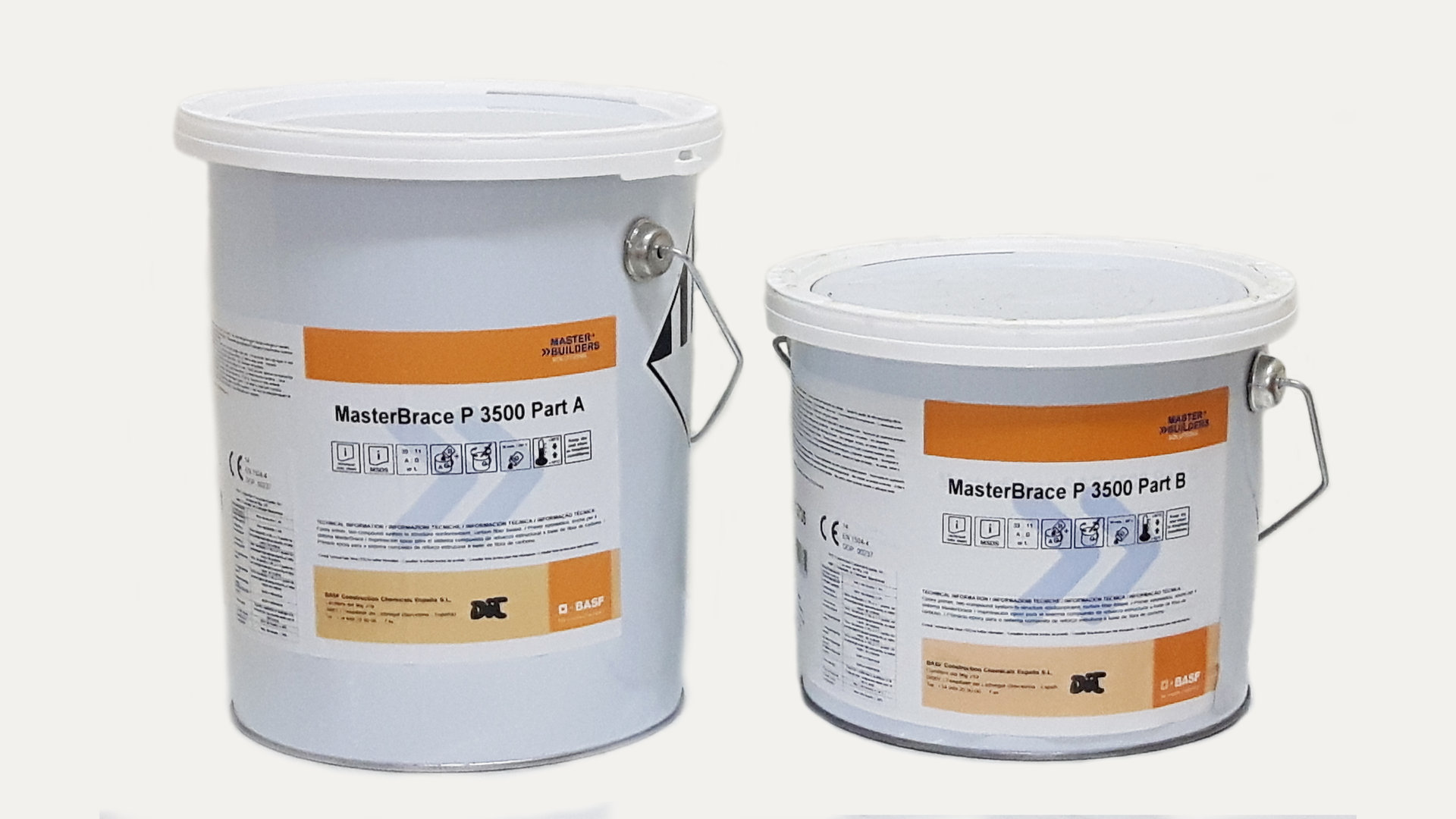Description
MASTERBRACE P 3500
INTRODUCTION
With decades of experience in construction projects and research, BASF CC Italia Spa offers an integrated approach to each specific structural problem, and offers the designer a wide range of FRP products, repair mortars, calculation manuals, full technical documentation as well as project consultancy from third party experts in the technology. The objective is to educate the technician and enable him to resolve the structural challenges he faces in his work to best effect. This documentation provides technical suggestions as well as critical consideration of the real potential and pitfalls of the technology. The information in this document is the outcome of vast practical experience.
Four types or FRP products are generally used in construction:
- bars: specifically aimed at applications requiring long life and improved fire protection. The matrix is designed to offer a high glass transition temperature Tg and thus excellent resistance to high temperatures. The fibres are a mix of high strength and high modulus of elasticity carbon fibre. The resulting system can be used in combination with Emaco mortar restoration, thus completely doing away with the need for conventional resins.
- carbon fibre/resin plates in an epoxy paste: the system is designed for applications requiring quick reinforcement installation. The resins are especially suited for levelling and glueing, have a good pot-life and are easy to mix, thus reducing the time required for the job.
- unidirectional fabrics and an epoxy impregnation resin of adequate viscosity for proper impregnation of MasterBrace FIB (MBrace Fibre) fabrics. The system adheres perfectly to the substrate, so long as the latter is properly prepared. This system optimises the amount of fibre on teh structure and is very well suited for multi-directional reinforcement applications.
- carbon fibre net applicable with epoxy resin or cement mortar. By nature, FRP (Fiber Reinforced Polymer) products are anisotropic and elastic with linear extension to failure. In contrast with steel, they are NOT ductile, isotropic or plastic. This means that FRP has only modest resistance to compression; if a fibre is cut or perforated at any point its contribution to the system’s strength is lost over its entire length; no tension is transferred between fibres laid orthogonally to each other; FRP products cannot be welded, layers must be coupled by means of resin; FRP products, with the exception of fabrics before being impregnated, cannot be folded on site since they are fragile and may fracture over time due to creep in the polymer impregnating the fibres.
RECURRING FRP PRODUCT TERMINOLOGY
For proper information about the technology, it is essential that one be clear about terms relating to FRP product. We review them in detail.
- Reference direction: the direction in which the fibres are laid in the fabric.
- Dry fibre: the individual fibre produced in the mill, protected by it protective layer, and wound onto bobbins for subsequent processing: weaving, pultrusion, lamination, etc.
- Weave / fabric: the designer must be provided with the traction resistance of the finished fabric, in relation to the width x thickness of the dry fibre. Knowing the mechanical specifications of the individual fibre (or filament) is not only pointless, it can be counterproductive, both because weaving reduces its mechanical properties, and because the dimensional effect is enhanced in such products. BASF data sheets include all value of use to the designer
- Unidirectional fabric: a fibrous fabric in which all fibres are laid in the same direction. BASF fabrics are all unidirectional.
- Bidirectional fabric: a fibrous fabric in which some fibres are laid in one direction and others in a different direction.
- Four-axis fabric: a fibrous fabric in which the fibres are laid in four different directions.
- Reference weight: the amount, in gsm, of fibre per reference direction.
- Equivalent thickness of dry fabric: the equivalent thickness of dry fibre laid in the reference direction. Unidirectional fabrics have only one reference direction; for bidirectional fabrics two reference thickness must be specified, one for each direction of laying, and so on. The reference thickness is the ratio between the weight and density of fibre used in the direction in question.
- Minimum overlap length: the minimum length of overlap between fibres which fully transfers tension between them, in other words, the minimum overlap beyond which failure of the sample under traction lies outside the overlap itself.



Reviews
There are no reviews yet.